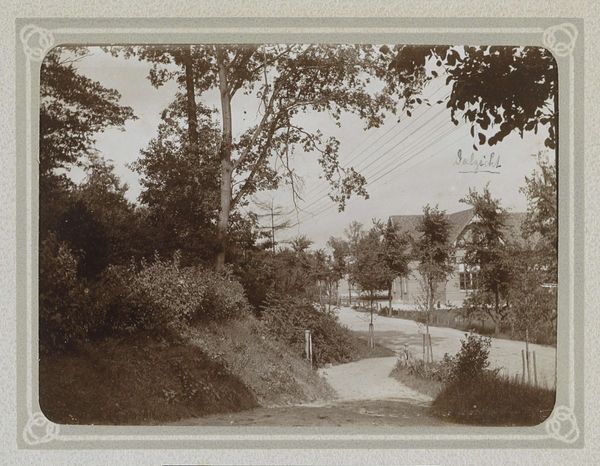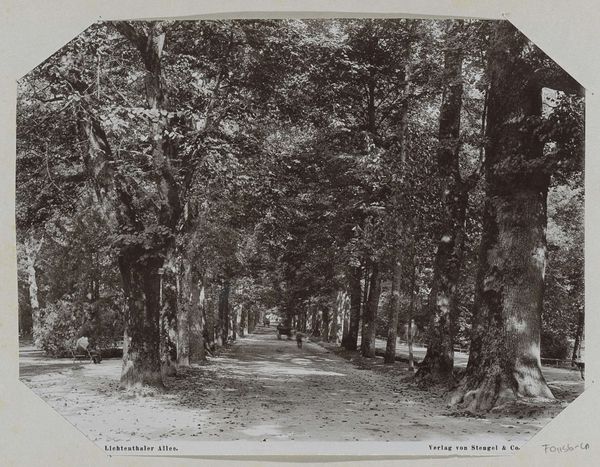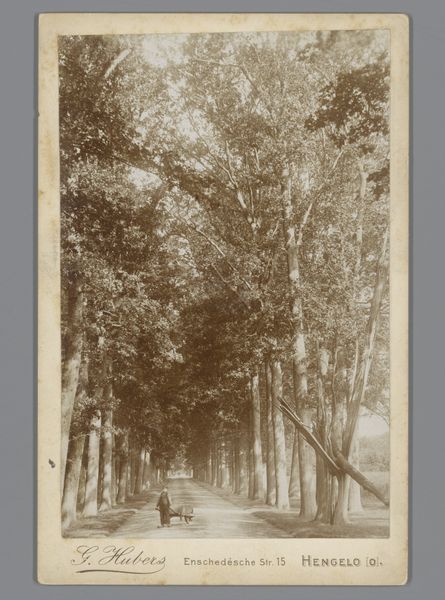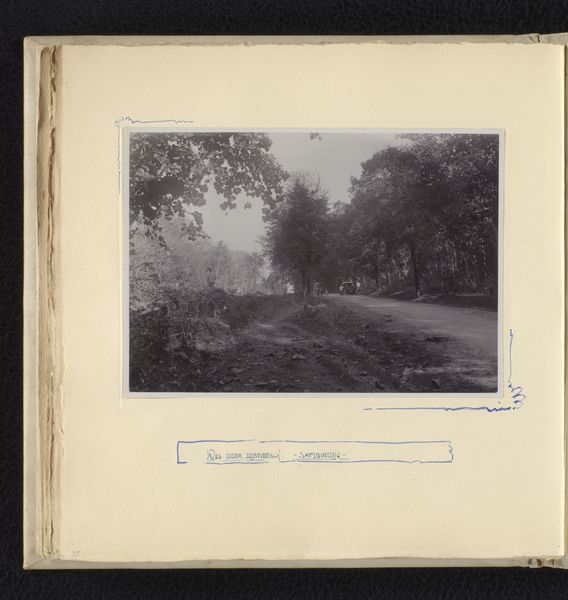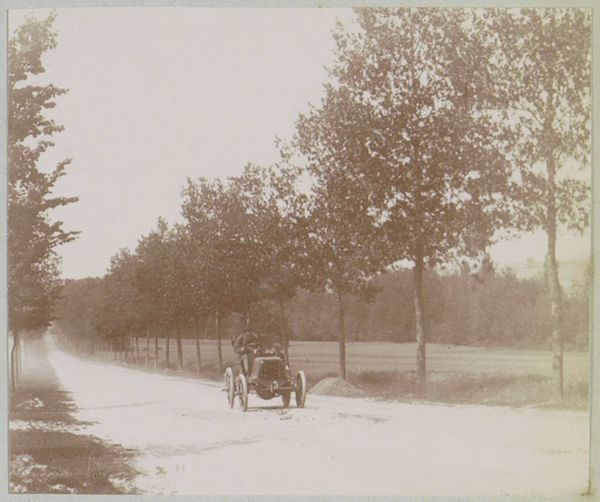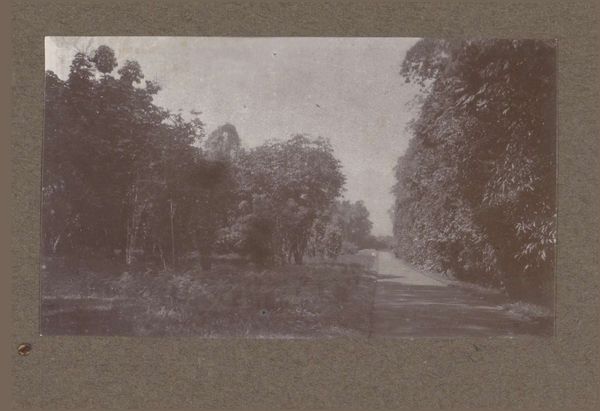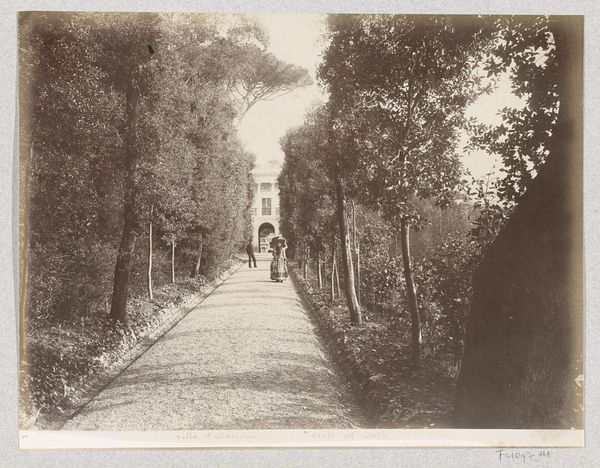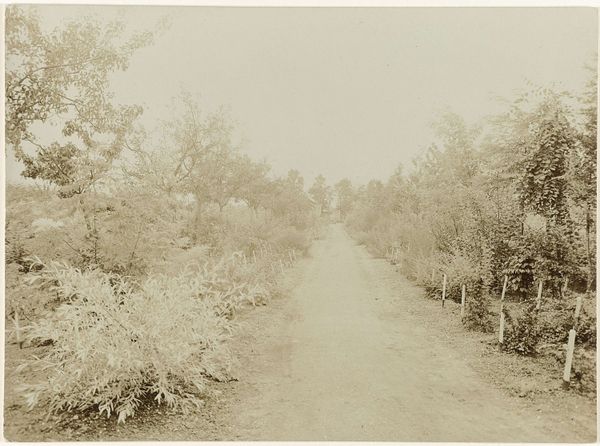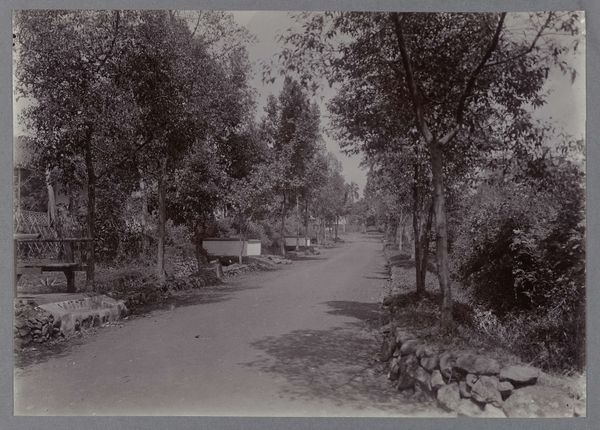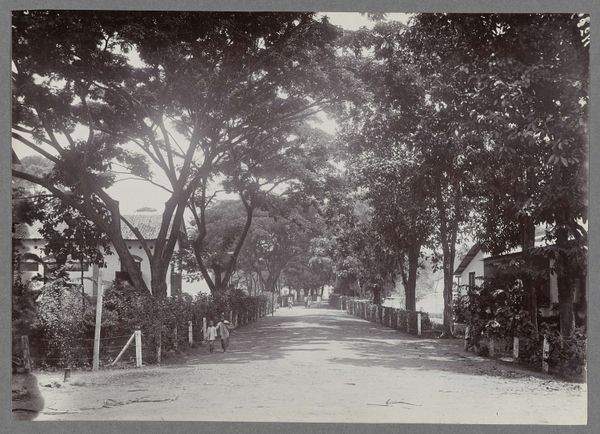
photography
#
landscape
#
photography
#
orientalism
Dimensions: height 148 mm, width 200 mm
Copyright: Rijks Museum: Open Domain
Curator: This landscape photograph is titled "John Bremer op de rubberplantage Boekit Pajong, Sumatra," dating from around 1911 to 1920. Editor: Immediately, I’m struck by its… stillness. There's a single figure in white clothing strolling down the center, but the rest of the frame feels almost like a stage set, carefully arranged and silent. Curator: Yes, and consider that rubber plantations in Sumatra became sites of intense colonial exploitation during this period. While seemingly pastoral, the imagery reflects the systematic reorganization of land and labor under colonial rule. Editor: So, these perfectly aligned rows of trees – which aesthetically create depth – simultaneously convey a very rigid imposition onto the natural landscape. Like, nature put in a chokehold for capital. Is that overly dramatic? Curator: Not at all. Rubber trees came to symbolize both modernity and exploitation. This is reflected in orientalist photography, which tends to romanticize landscapes even when, as in this case, these spaces are fundamentally altered by colonialism. The single figure adds to the image, presenting Europeans as authorities present in a world reshaped by their intervention. Editor: I see. He’s holding some kind of stick, isn't he? Looks very much like the visual trope of the ‘intrepid explorer,’ though in this case, less ‘intrepid,’ and more like a supervisor. It's as if this tranquil path and all those orderly trees are extensions of his own control. The repetition…it almost drains the colour of its supposed tropical nature. Curator: Indeed, this contrasts starkly with how indigenous knowledge and land usage would differ. Instead, monoculture agriculture and ideas of colonial planning come to mind. You can also view such organized landscapes as indicators of political power. Editor: Looking again, you are absolutely correct! Well, that gives me a lot to think about… Curator: As it should! And the impact such landscapes had on Sumatran society can scarcely be captured in single view, let alone described in mere words.
Comments
No comments
Be the first to comment and join the conversation on the ultimate creative platform.
